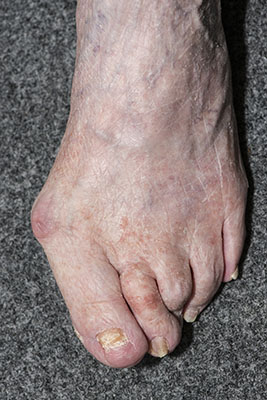 Hallux valgus, which is more commonly known as a bunion, is a deformity of the joint at the base of the big toe. Most people who have bunions develop them from wearing uncomfortable shoes for a long period of time. Women are more likely to have bunions compared to men because they often wear high heels. Bunions are not a life threatening condition; however they can negatively impact one’s quality of life. There are a few non-surgical options for those wishing to treat their bunions. Physiotherapy and the use of devices such as bunion splints and toe spacers can work to alleviate bunion pain; however they may not be effective in the long run.
Hallux valgus, which is more commonly known as a bunion, is a deformity of the joint at the base of the big toe. Most people who have bunions develop them from wearing uncomfortable shoes for a long period of time. Women are more likely to have bunions compared to men because they often wear high heels. Bunions are not a life threatening condition; however they can negatively impact one’s quality of life. There are a few non-surgical options for those wishing to treat their bunions. Physiotherapy and the use of devices such as bunion splints and toe spacers can work to alleviate bunion pain; however they may not be effective in the long run.
Bunion surgery usually occurs after non-surgical methods have proved to be ineffective. If you have any concerns, contact Dr. Lubrina Bryant of District Podiatry, PLLC. Our doctor will assess your injury and provide you with quality treatment.
What is a Bunion?
A bunion is formed of swollen tissue or an enlargement of boney growth, usually located at the base joint of the toe that connects to the foot. The swelling occurs by the bones in the big toe shifting inward, which impacts the other toes of the foot. This causes the area around the base of the big toe to become inflamed and painful.
Why do Bunions Form?
How are Bunions Diagnosed?
Doctors often perform two tests – blood tests and x-rays – when trying to diagnose bunions, especially in the early stages of development. Blood tests help determine if the foot pain is being caused by something else, such as arthritis, while x-rays provide a clear picture of your bone structure to your doctor.
How are Bunions Treated?
If you have any questions please contact our offices located in Washington, D.C.We offer the newest diagnostic and treatment technologies for all your foot and ankle needs.
Read more about bunions.